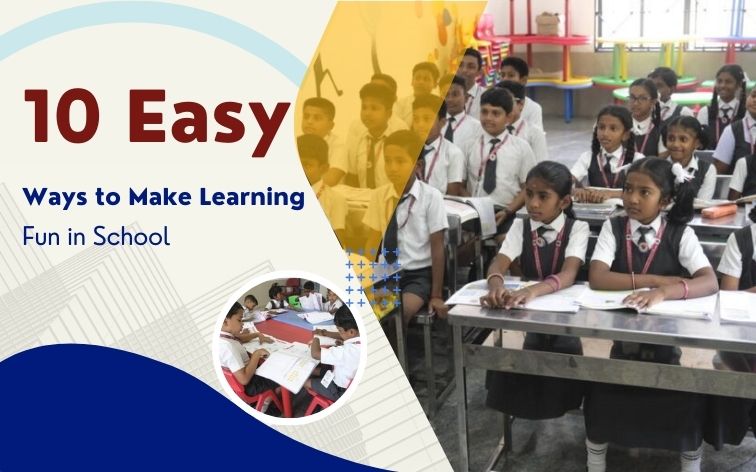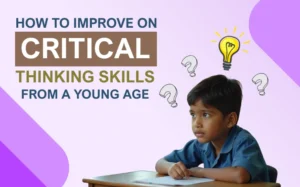
Imagine a classroom where equations transform into treasure maps, history lessons feel like time travel, and science experiments spark fireworks of curiosity. In today’s educational landscape, where traditional methods often lead to disengagement, making learning fun is essential. By blending creativity, culture, and technology, educators can turn classrooms into vibrant hubs of education with fun. Here are 10 proven strategies to make lessons unforgettable, designed for students everywhere!
Gamify Lessons for Instant Learning Fun
Gamification tops the list of fun and learn activities to boost engagement and mix fun with education. Transform math problems into competitive games or use interactive platforms like quizzes to encourage friendly competition among students. Research shows that gamified classrooms see a significant increase in participation. For example, teachers can create challenges where students earn points for completing tasks or answering questions correctly, making learning feel like an exciting adventure.
Role-Play Real-World Scenarios
Nothing sparks learn with fun like stepping into someone else’s shoes. Students can reenact historical events, debate ethical dilemmas, or simulate scientific discoveries through role-play. This method not only enhances understanding but also builds empathy and critical thinking skills. For instance, students could role-play as historical figures during a significant event, allowing them to explore different perspectives while deepening their knowledge of the subject matter and an additional bonus when they learn with fun and can be called as fun and learn activities.
Integrate Hands-On Experiments
Fun learning activities thrive on tactile experiences. Engaging students in hands-on experiments—like building simple machines or conducting chemistry reactions—can significantly enhance their understanding of complex concepts. This approach aligns with research showing that hands-on learners retain more information than passive observers. By using everyday materials for experiments, teachers can make science accessible and exciting while encouraging curiosity and exploration for learn with fun.
Leverage Technology for Interactive Lessons
From virtual reality (VR) field trips to interactive apps , technology helps bring the concept of education with fun more engaging than ever and it is filled with fun and learn activities. Educators can incorporate tools that allow students to explore different cultures or scientific phenomena from their classrooms. For example, using VR headsets for immersive experiences can transport students to historical sites or distant planets, making abstract concepts more tangible and relatable.
Storytelling & Creative Writing
Stories captivate minds and can be powerful tools for learning. Teachers can frame lessons around narratives—turning math problems into stories or using literature to explore themes in history or science. Encouraging students to create their own stories or poems related to the curriculum fosters creativity and makes learning more personal and enjoyable. This approach not only enhances comprehension but also develops communication skills and imagination.
Outdoor Learning Adventures
Swap four walls for open skies to make learning fun! Outdoor learning experiences—such as nature walks, scavenger hunts, or gardening projects—can teach subjects like biology and ecology in a hands-on way and can be fun learning activities. These activities allow students to connect classroom knowledge with the real world while promoting physical activity and teamwork. Research shows that fresh air boosts focus and creativity, making outdoor lessons both fun and effective.
Collaborative Group Challenges
Fun activities thrive on teamwork. Group challenges encourage collaboration and problem-solving skills as students work together to complete tasks or projects. For example, they could design a solution to a local environmental issue or create a presentation on a topic of interest. This method not only builds social skills but also fosters a sense of community within the classroom while making learning a shared experience.
Music and Movement
Incorporating music and movement into lessons makes them more dynamic and engaging and is among fun and learn activities. Teachers can use songs to teach concepts—like creating rhymes for multiplication tables—or incorporate dance routines that illustrate scientific processes or historical events. This multisensory approach caters to different learning styles and helps reinforce concepts through rhythm and movement, making lessons memorable and enjoyable.
Flexible Learning Stations
Creating flexible learning stations allows students to engage with material at their own pace and in their preferred style. Each station can focus on different activities related to the same topic—such as puzzles, digital simulations, or group discussions—catering to diverse learning preferences within the classroom environment. This setup encourages exploration and self-directed learning while reducing boredom by providing variety in how content is delivered and absorbed.
Celebrate Progress with Rewards
Small rewards can motivate students to stay engaged in their learning journeys. Celebrating achievements—whether through stickers, certificates, or extra playtime—creates a positive reinforcement cycle that encourages continued effort and participation in class activities. Recognizing individual and group accomplishments fosters a supportive atmosphere where students feel valued for their contributions, enhancing their overall educational experience.
Mahalakshmi Vidya Mandir: A Leader in Making Learning Fun
One school that exemplifies these principles is Mahalakshmi Vidya Mandir (MVM), Chennai. This institution has embraced innovative teaching methods that prioritize student engagement through various fun learning strategies mentioned above and mixing education with fun.
With a commitment to holistic education, MVM integrates technology seamlessly into its curriculum while fostering creativity through arts and hands-on projects for fun learning activities. The school encourages collaboration among students through group challenges that enhance social skills alongside academic knowledge, ensuring a well-rounded educational experience.
Conclusion
Making school a fun and learn activities playground doesn’t require fancy budgets—just creativity and intention from educators who want to inspire their students. By embracing innovative teaching methods that incorporate games, technology, storytelling, outdoor adventures, and collaboration, schools can transform classrooms into joy-filled learning ecosystems where curiosity thrives.
When students learn with fun, they don’t just memorize; they innovate, empathize, and lead the way toward a brighter future for themselves and their communities!




